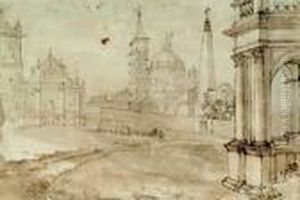Francois Ii Stella Paintings
François Stella, often referred to as François II Stella to distinguish him from other family members with the same name, was a French painter born in 1630 in Lyon, France. While not as widely recognized as some of his contemporaries, Stella played a significant role in the French artistic community of the 17th century. His work is characterized by its intricate detail, vibrant colors, and the incorporation of classical themes, reflecting the Baroque style that dominated European art during his lifetime.
Stella received his initial art education from his family, as he belonged to a dynasty of artists that included several prominent painters and engravers. This early exposure to art and craftsmanship provided him with a solid foundation, which was further developed through his studies and apprenticeships with established artists of the time. Despite the lack of extensive documentation on his training, it's clear that Stella's skills were honed in the rich cultural atmosphere of Lyon, a city known for its thriving artistic community.
Throughout his career, François Stella worked on a variety of projects, including religious commissions for churches, portraits, and historical scenes. His religious works are particularly noted for their emotional depth and use of light, qualities that align him with the broader Baroque movement. Stella’s ability to convey complex narratives through his paintings earned him commissions and recognition from the church and noble patrons alike.
Stella's contributions to art were not limited to his paintings. He was also involved in the artistic discourse of his time, participating in the intellectual and cultural exchanges that were central to the Baroque period. Through his work and interactions with other artists, Stella contributed to the evolution of French art, influencing the transition from the Mannerist to the Baroque style.
François II Stella died in 1682 in Paris, France. While he may not have achieved the same level of fame as some of his peers, his work remains an important part of the study of French Baroque art. Today, Stella's paintings can be found in several museums and private collections, where they continue to be appreciated for their beauty and historical value.
